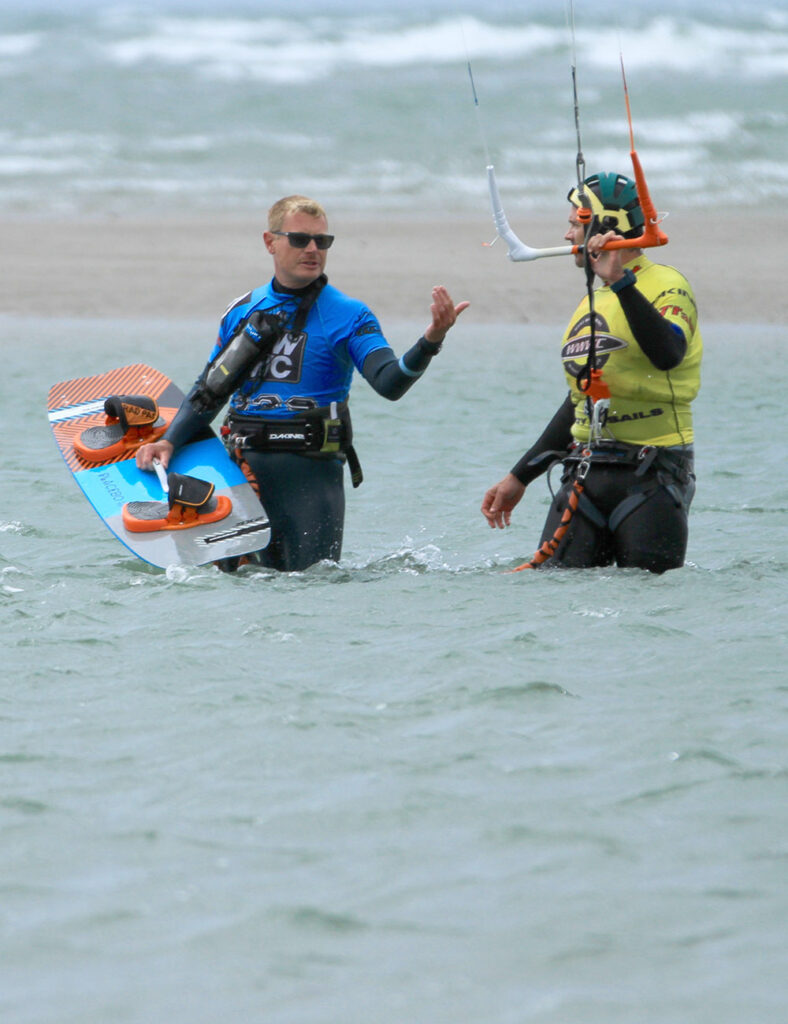Kite surfing, a dynamic fusion of wind power and wave riding, requires a comprehensive understanding of both wind dynamics and board control. At its core, harnessing the wind effectively is the fundamental skill that distinguishes proficient kite surfers from novices. Beginners embarking on this exhilarating journey must grasp the basics of wind behavior and how to manipulate it to propel themselves across the water. Central to kite surfing instruction is learning to assess wind direction, speed, and quality. Wind direction dictates the path the kite will take in the sky, while wind speed determines the power generated by the kite. Moreover, understanding the wind’s quality involves recognizing its consistency and steadiness, crucial for maintaining control throughout maneuvers. Mastering kite control is paramount for safe and enjoyable kite surfing. Novices must first become proficient in launching and landing the kite safely before attempting to ride the waves. Proper kite handling techniques, such as depowering and steering, are essential to mitigate the risks associated with strong gusts or sudden changes in wind direction.
 Furthermore, learning to read the wind’s cues, such as ripples on the water’s surface or fluctuations in wind speed, aids in anticipating and responding to changing conditions effectively. Aspiring kite surfers must also develop a keen sense of spatial awareness and board control. Balancing on the board while simultaneously maneuvering the kite demands coordination and precision. Beginners often struggle to maintain their balance and direction, requiring patience and practice to hone their skills. Proper body positioning, weight distribution, and foot placement are crucial for stability and control on the board. Additionally, understanding how to edge the board against the water and execute turns smoothly is essential for navigating choppy waters and catching waves effectively. Safety is paramount in kite surfing, and all practitioners must adhere to established safety protocols to minimize accidents and injuries. Proper equipment maintenance and inspection, including checking lines, harnesses, and safety systems, are essential before each session.
Furthermore, learning to read the wind’s cues, such as ripples on the water’s surface or fluctuations in wind speed, aids in anticipating and responding to changing conditions effectively. Aspiring kite surfers must also develop a keen sense of spatial awareness and board control. Balancing on the board while simultaneously maneuvering the kite demands coordination and precision. Beginners often struggle to maintain their balance and direction, requiring patience and practice to hone their skills. Proper body positioning, weight distribution, and foot placement are crucial for stability and control on the board. Additionally, understanding how to edge the board against the water and execute turns smoothly is essential for navigating choppy waters and catching waves effectively. Safety is paramount in kite surfing, and all practitioners must adhere to established safety protocols to minimize accidents and injuries. Proper equipment maintenance and inspection, including checking lines, harnesses, and safety systems, are essential before each session.
Additionally, kite surfers must familiarize themselves with local regulations and guidelines of kite lagos, including designated launch and landing areas, right of way rules, and weather restrictions. Practicing self-rescue techniques and knowing how to safely release the kite in emergency situations are also critical skills every kite surfer must possess. Beyond the technical aspects, kite surfing is a sport that fosters a profound connection with nature and a sense of freedom unparalleled by other water sports. As riders harness the power of the wind to glide across the water’s surface, they become attuned to the elements, experiencing a unique blend of exhilaration and tranquility. The journey from novice to proficient kite surfer is as much about mastering the physical skills as it is about cultivating an appreciation for the natural forces at play. With dedication, perseverance, and a deep respect for the wind and sea, aspiring kite surfers can embark on a thrilling adventure that promises endless opportunities for growth and self-discovery.